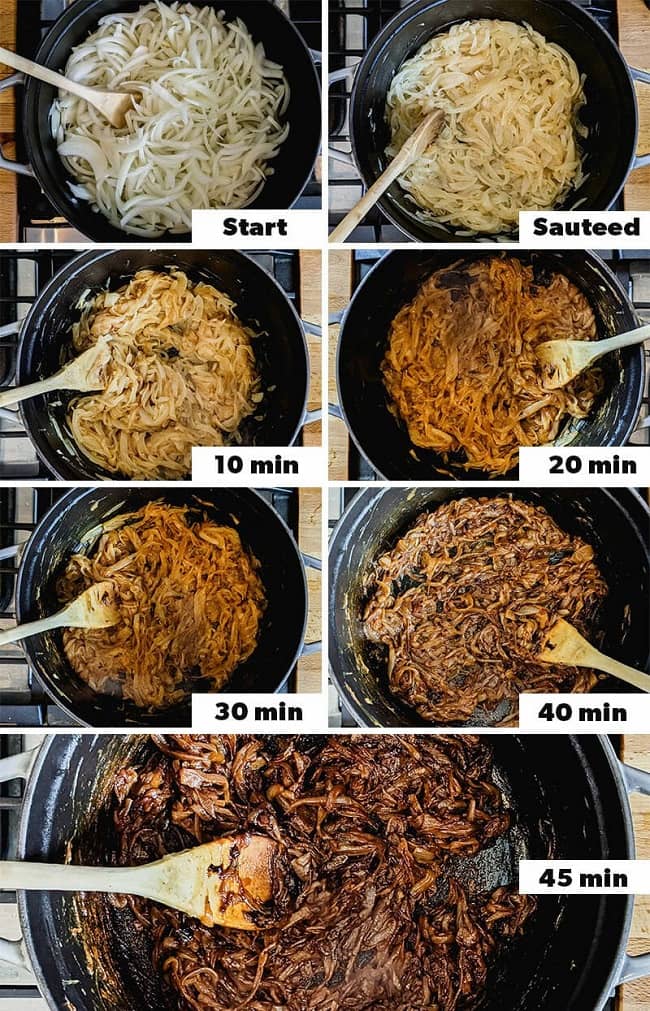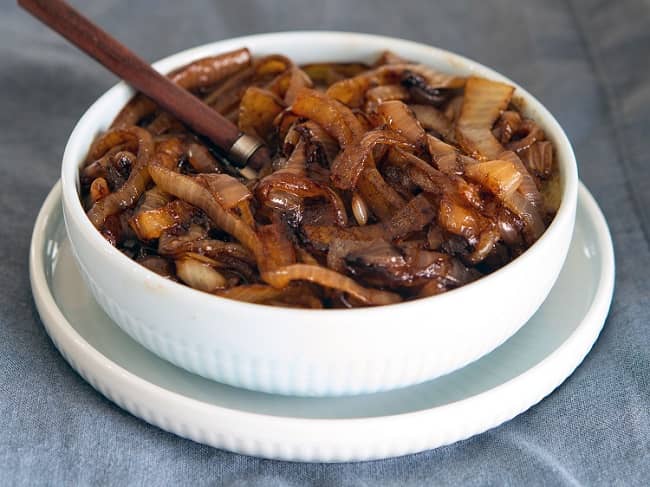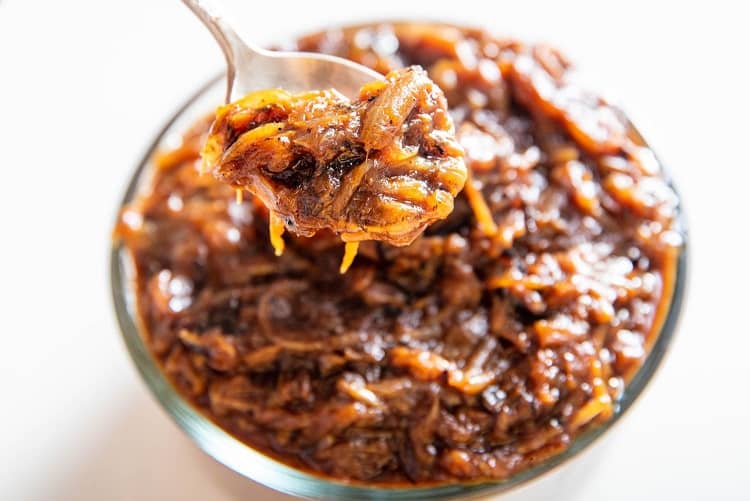-
Food: Caramelized Onions
-
Writer: Alice
-
Content-Type: Food Blog
Find out how to consistently make great caramelized onions! They enrich pasta, soups, and other dishes with their rich, sweet, and deep golden brown color.
Caramelized onions are one of those enchanted, potent foods, like roasted garlic, that can transform practically everything they’re added to—dips, pasta, soups, you name it—with more flavor. They smell wonderful in addition to being rich, silky smooth, and sweet.
Fortunately, making caramelized onions is straightforward. It does take time to make them, though. On a weeknight when you’re looking for a quick, pantry-friendly topping for a pizza or veggie burger, don’t try to speed the process.
Caramelized onions take a while to prepare. Caramelizing the natural sugars in onions takes at least 45 minutes (and frequently more than an hour) over low heat.
Nevertheless, the time was well spent. Caramelized onions, which are bursting with delicious umami taste, give savory recipes more richness. The ability to caramelize onions is essential if you enjoy cooking.
RECIPE IDEAS FOR CARAMELIZED ONIONS
- Prepare the entire recipe. Make a lot of caramelized onions if you’re willing to spend an hour or more preparing them! They last a week when kept in the refrigerator in an airtight container. Additionally, they can be frozen for up to two months. In ice cube trays, I prefer to freeze caramelized onions. I can then quickly defrost just enough for a single dish and store the remainder for later.
- Pick the appropriate pan. For creating pancakes and eggs, I prefer non-stick frying pans, but they’re not the ideal choice for caramelized onions. I suggest switching to a cast-iron skillet instead. A mouthwatering fond will form on the bottom of the pan as the onions cook. It will enhance the flavor of the onions if you scrape them up and add them to them. The size of the pan also counts. To enable moisture to evaporate while the onions cook, they should be big and wide. You’ll need a 12-inch or larger skillet for 4 onions. A 10-inch skillet will do for 3 onions.
- At the very end, turn up the heat. To avoid the onions from burning before they have a chance to soften and caramelize, the heat should be kept at a low or medium-low level throughout the majority of the cooking procedure. To get a little more caramelization after they’re brown and tender, I like to set the heat to medium-high while stirring regularly and scraping up the browned pieces from the pan’s bottom. Then, I like to remove them from the fire.
HOW TO MAKE CARAMELIZED ONIONS

Source: Serious Eats
The time-consuming part of my process for caramelizing onions is balanced out by how easy it is to do. Here’s what happens:
Slice the onions initially. So that they cook at the same rate, try to make the slices as even as you can. The onion layers should be separated before being added to the pan.
Sauté next! In a large cast-iron skillet over medium heat, warm the olive oil (I use 2 teaspoons for 4 onions). The onions should soften after 5 minutes of cooking when added and continuously stirred.
Reduce the heat to medium-low and continue cooking, stirring every few minutes, once all of the onions have softened.
Turn down the heat if the onions start to burn or cling to the bottom of the pan. If the pan begins to dry out, you may also add a little water.
The onions will become tender, caramelized, and deeply browned after 50 to 80 minutes. The size of your pan, the size of your onions, and the heat level of your stove will all affect how long things will take to cook.
SUGGESTIONS FOR SERVING
Your caramelized onions are prepared when they resemble those in the picture above. You may utilize them in a variety of ways, but to get you started, here are a couple of my favorites:
- In dip! This French onion dip gets a delicious sweet and savory flavor boost from them.
- in soup, The classic French onion soup is rich and flavorful for a reason.
- as a topping for burgers or sandwiches. Add them to your next grilled cheese sandwich, vegetarian burger, or portobello mushroom burger.
- and eggs. They can be included in a frittata or folded into an omelet. These single-serving frittata muffins would be excellent with them as well!
- pasta is. They can be included in simple pesto pasta, roasted vegetable spaghetti, or traditional mac and cheese. They would taste great in vegan mac and cheese or this creamy spaghetti!
- about pizza. You won’t go back once you’ve had caramelized onions on pizza. Put them on my cast-iron skillet pizza or a homemade pie with your preferred ingredients.
CARAMELIZED ONIONS
Learn the secret to consistently flawless onion caramelization! They taste great in soups, dips, pasta, and other dishes. They are rich, sweet, and deeply golden brown.
|
Serves: 8
|
INGREDIENTS
- 2 tablespoons extra virgin olive oil
- 4 medium yellow onions, halved and sliced
- 1/2 teaspoon sea salt
INSTRUCTIONS

Source: Serious Eats
- A 12-inch cast iron skillet with medium heat is used to heat the oil. Saute the onions for 5 minutes, or until they begin to soften.
- When the onions are very tender, golden brown, and caramelized, cook them for 50 to 80 minutes on medium-low heat while stirring occasionally. The amount of heat on your burner and the size of your onions will determine the timing.
- Reduce the heat to low if the onions ever begin to adhere to the bottom of the pan. You can increase the heat to produce more caramelization if the onions aren’t deeply browned after 50 minutes and you’d like to move things forward quickly. Burning is avoided by constant stirring.
NOTES
*Please take note that you can prepare this dish in a 10-inch skillet with 3 onions and 1 1/2 teaspoons of oil.
